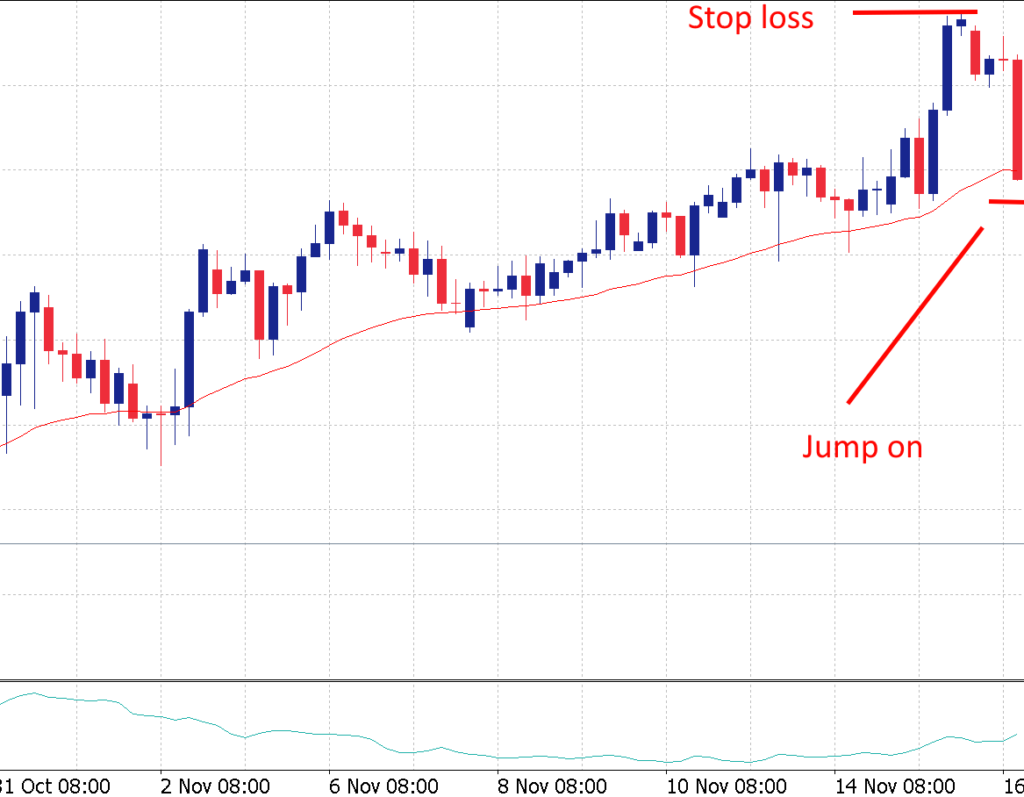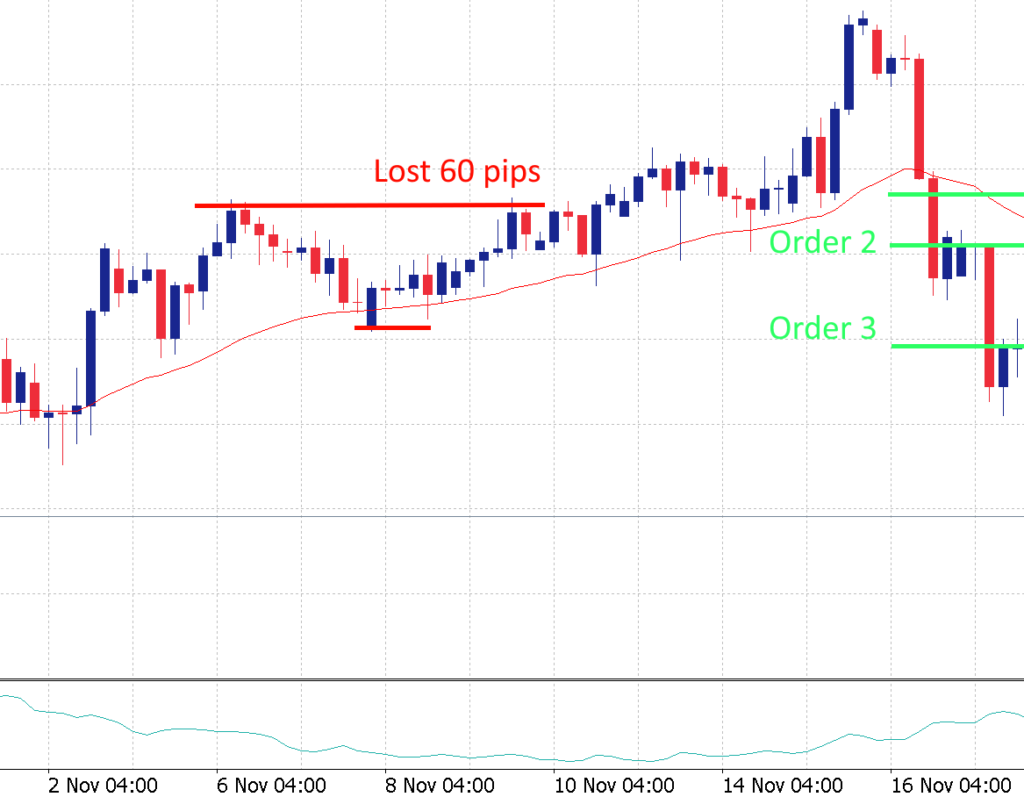This is Part 2 of my blog on how I converted my MT4 EA to MT5. Part 1 can be found here, which introduces the blog series. In the next few parts we’re building an EA and you’ll ultimately be able to download my EA.
‘Wingman‘ is the result of what started as a dream when I was in my 20’s. It’s the name of my EA that I have been trading with for many years. Before that, there were also many years of failure, adapting, improvement, generations of wingmen and breaks in between. If you’re a trader yourself you’ll know the difficulties that come with choosing this career path, but in the end can be rewarding. Most of the reward me and Wingman worked for comes in the form of the freedom to plan my own working hours and spend more time with my family.
In this part of the blog I’ll be telling you more about my trading strategy, how it works and why it works. I do want to note that this system works for me because it matches my trading style. If you prefer trading small timeframes and focus on price action and momentum, that’s fine too. In this blog I’m merely telling my story on how I managed to transition a system which works for me to MT5. In the next parts of this blog, I’ll tell you how you can convert this strategy into a MT5 EA.

Wingman is a master at maximizing profits from the long trends and cutting losses early, thus avoiding danger.
Let’s start with why my trade strategy works. It works, because of the same reasons most trading strategies work. It’s because the strategy is good in many important aspects of trading, which is why I stick to my rules.
My rules
Rule #1 wait for the right opportunity.
I don’t switch jobs in a bad job market, I don’t buy a house without savings, I don’t go sailing when there is no wind. If I wake up in the morning and my goal would be to enter at least 1 trade before 12 AM every day and otherwise feel like I have done nothing, I will lose. Doing nothing is often the best way to prevent a mistake.
Rule #2 respect all aspects which aim for a better result
A lot of new traders focus on one aspect of a trading system only. For example, they focus on their entry position, for example the entry indicator. I think it’s wrong to think if the entry position is good, the money will come. That’s like thinking if I’ve got the best forward player on my team, my team will win. Or if my racing car just has the best engine, I will finish P1. With a positive result being my main goal, I shouldn’t only look into maximizing profits, I should focus just as much on minimizing losses, commissions, spreads, interest rates, etc.
The EA I’m going to build is very simple. In fact the EA only uses 1 indicator, which can potentially be traded on any timeframe and during any trading session, as long as all rules are consitently followed. I use it to make hundreds of pips of profit, with only a small Stop loss.
Rule #3 let profits run and double down
Once my trade is making a profit, what do I do? Will I constantly be thinking if I should take my profits, or shoud I rest asured the trade is doing what I am expecting it to do and start adding trades? I add trades, because once I have an opportunity with a good result, I will make sure the profits cover past losses and expenses to end up with a positive result.
Now we’ve set the rules, we can move to the first part of our trading strategy: waiting for the right opportunity.
Rule #1 – Waiting for the right opportunity
Wingman will seek the right opportunity to pick the start of a trend. We don’t want to enter halfway through a trend. I’ll show you how I get into a trend, but know that there are many ways you can choose to pick the start of a trend, like by using Moving average, Support and Resistance, candle patterns, Stochastic cross, etc.
I merely use a Smoothed Moving Average, period 38 and and look at the H4 timeframe. I check if the SMA has been moving in trends or generally sideways in most recent times to see if it has been trending up and down nicely.
Then I’ll wait for the price to close above/ under my SMA with reasonable momentum and jump on the wagon. Here you’ll see an example where the price is dropping below my SMA and I’m waiting for it to close below the SMA. Then I’ll open my first Sell order.

We see the price is crossing the SMA with increasing volatility.
We can relatively safely enter this trade only because we know that if we are right about the trend reversing, we can gain a lot of pips from it, but also because when we lose, we’ll only lose 90 pips. However, if we’re right, we could gain a thousand pips.
Rule #2 – Respect all aspects which aim for a better result
When creating Wingman I didn’t just focus on the entry condition. I know by now that every aspect that reduces my profit needs my full attention. When I created my first Wingman, I was far away from having a profitable strategy. I found out I shouldn’t abandon the idea of trading SMA, but that I simply had to look at the strategy from every angle possible. I’m an engineer and when something doesn’t work I won’t throw out the baby with the bath water, instead I dig into it. I could’ve just blamed SMA for being too simplistic and move on to the next system and the next. Instead, I started focussing on where to set SL, when to move SL and how to minimze commissions and spreads. Also, I started to learn what to look out for, like false entry clues.
I can almost hear people ask how to reduce commissions, in this case I’m referring to trading high timeframes. When trading high timeframes the absolute number of pips gained/ lost almost naturally increases, thus the relative percentage of commission drops. It’s more difficult to compensate the loss of commission when aiming for higher profits than for example when scalping. When scalping, you can aim for lower spreads instead, by trading during times with high liquidity.
Rule # 3 – Let profits run and double down
If I wouldn’t try to catch as many pips of profit as possible from a trend down or up I would find it very difficult to make a profit and actually compensate the (in this case) 90 pips of SL. So, we need to make as many pips of profit as possible, without taking any more risks.
So, when to add more positions? In my mind I see a channel (diagonal support & resistance) and I would be trading the upper or lower channel depending if the trend is bullish or bearish, but I personally find it difficult to see a clear channel, especially at the beginning of a trend. That’s why we’ll keep this simple too. Instead we’ll add another order each bar that closes in the opposite direction. For example if we’re trading a down trend, we’ll be looking for a bullish candle, which is a retracement and then open another with the same size as the previous order. We only do this if the order is at least 5 pips in the correct direction compared to the previous order.

After I lost 60 pips on the previous opportunity, I’m now 3 orders in, with the first 2 well in profit.
What I’m now going to do is make sure I’ve got my exit conditions in place. Also, when I add orders, I move my order’s SL to guard my profits.
Capturing my profits
I will exit my complete position (collection of all sell orders) when the price hits SL or closes above the SMA.
Waiting for the price to catch the SMA may actually cause (large) losing trades, especially if the price first dropped violently, as in our example, and then catches up with the SMA relatively quickly. I don’t want my losing orders to completely wipe the profitable order’s profit, so if order 3, 4, etc. opens more than 20 pips away from my SMA, I set the order SL for that order to previous swing high. I leave all other orders untouched. I won’t set the SL to a different position for the first 2 orders because these are pretty close to the SMA anyway and the first orders need a bit of space to get into the start of the new trend, which the market may not have decided on yet.
Read the next part of my blog to learn how I convert my trading strategy into an EA using MetaTrader 5.
2 Comments